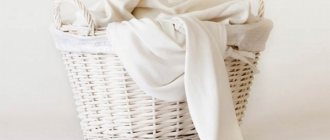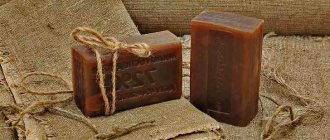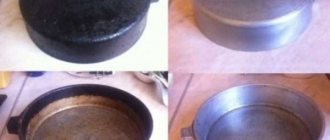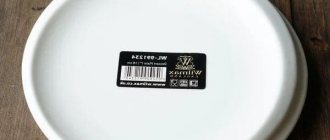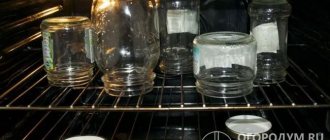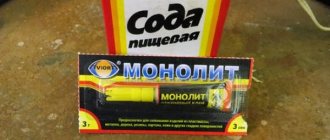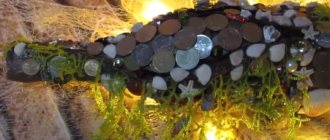Chances are you're familiar with that problem where you buy new cookware at the store and then when you get home you spend hours (very long hours) removing the stickers? And there’s no point in talking about stickers on photo frames.
Once you remove the label or price tag, you are often left with a thick layer of sticky glue that is impossible to get rid of. Sometimes you can’t even really get rid of the label and have to deal with both the paper and the glue underneath it.
Luckily, there are a few things you can do to salvage items that have been seriously damaged by misplaced stickers, and it doesn't require a science degree or a bunch of weird-sounding materials. Here are a few ways to remove sticker residue quickly and easily the first time.
Put sharp objects aside first
If you are tempted to scrape off the label with a scraper or spatula, don't do it. They may leave scratches or chips on the glass surface.
Try to remove as much sticker residue as possible using your fingernail or a damp paper towel. But if the label is particularly stubborn, it's best to skip all that and just soften the paper and loosen the glue underneath using one of the following methods. Sometimes a quick heat from a hairdryer is all it takes to melt the adhesive and remove the label in one fell swoop.
Soak the sticker in vinegar
Vinegar has long been used to get rid of grease and sticky residue on hard surfaces. To remove a label from a glass surface, soak a paper towel or old rag in white vinegar and apply it to the sticky surface. Let the vinegar soak in for a few minutes and then wipe it off. This should remove most of the remaining adhesive from the glass, but if necessary, use a plastic scraper to get rid of any residue.
Use a hair dryer
Of all the ways to remove a label from a glass surface, this is probably the most convenient.
Set the hair dryer to high heat and point it directly at the label. Heat the sticker for 20-30 seconds. Then set the hair dryer aside and, while the glue is still warm, carefully remove the label from the item with your fingers.
Continue heating the sticker as needed until it is completely removed. If everything is done correctly, the sticker should peel off easily, without tearing or leaving small, difficult-to-remove pieces.
Helpful information
Every business has its own tricks that make your work easier and help you achieve the best results. So, in the case of removing glue from glass containers, you need to keep in mind:
- Rolling of the glue under the action of the solvent indicates a short holding time.
- Hot water inside the bottle/jar speeds up the process of glue release.
- To avoid problems with sticky stains, they should be removed immediately after removing the label.
- Glass may break if exposed to direct fire.
Make your own cleaning product
Regular baking soda is an all-purpose cleaner that can get rid of dirt and grease.
Rare shot: Viktoria Isakova showed her grown-up daughter from Yuri Moroz (new photo)
It’s good to wash often: myths about shampoo and hair care that only harm
Women's jeans: before you buy them, you need to pay attention to one detail
Simply mix together 2 tablespoons of vegetable oil and 3 tablespoons of baking soda. Apply a thick layer of paste over the sticky material, let it sit for a few minutes and use your fingers or a brush to carefully remove the label. The oil and baking soda gently remove sticker residue without damaging or scratching the surface underneath.
If you can’t remove the sticker the first time, you can apply the baking soda and oil paste again and leave it overnight.
Soak in hot soapy water
Place a few drops of dish soap into a bowl or sink full of hot water. Immerse the labeled item in water and keep it there for 15 minutes. The water will soften the glue and dissolve the paper, allowing you to remove it with a dish brush or your fingernails.
If you cannot soak the glass object itself in a soapy solution, you can only wet the sticker with a sponge.
You can remove a sodden sticker not only with your fingers, but also with a dull knife. Simply use a knife to carefully pick up the edge of the sticker and run it under the paper to remove it completely. Be careful to use only a dull blade to avoid scratching the glass.
How to remove stickers and glue using improvised methods
You can remove stickers from glass using substances available in any home. The list of the most effective ones includes vegetable oil, ammonia, acetone and other available means.
Vegetable oil
To remove sticker glue from glass, you will need cotton pads, a dry sponge and vegetable oil.
Moreover, it does not matter which product will act as a cleaner. Regular sunflower, olive, linseed and other types of oils are suitable.
Step-by-step instruction:
- Peel off the top (vinyl) paper layer from the sticker.
- Soak a cotton swab or small rag in vegetable oil.
- Place it on the dirty area for a couple of minutes.
- Remove the remaining adhesive layer with the soft side of the sponge.
- Clean the surface with glass cleaning spray.
If after applying the oil there are still streaks on the sticker, soak the remaining glue with acetone or white spirit. Lightly heat stains soaked in solvent with a hairdryer. The remaining glue will begin to roll into lumps, which can be removed from the glass with a rubber spatula or eraser.
Ammonia
Ammonia will help remove stickers from plastic windows.
Even grandmothers used the substance to wash glass and crystal by diluting it in water. To clean the glue, prepare another mixture - ammonia + dish soap (proportions 3:1).
Step-by-step instruction:
- Open a window for ventilation (ammonia has a pungent odor that can cause burns to the mucous membrane).
- Mix ammonia and dishwashing detergent. Lightly foam the resulting liquid and soak a sponge in it.
- Apply the sponge to the remaining sticker. Fix for half an hour.
- Remove any remaining glue with a plastic scraper or the rough side of a sponge.
After removing the sticker, wash the windows with an aqueous solution of ammonia. It will remove adhesive residues and create a protective film on the glass, which will protect the surface from dirt settling for several months.
It is better not to use the substance for cleaning glasses and dishes. Even when diluted with water, it emits a pungent odor that is difficult to get rid of.
Acetone
The substance quickly dissolves adhesive fractions and fats.
However, it is only effective against fresh stains. For processing you will need acetone and a couple of cotton pads.
Step-by-step instruction:
- Soak a cotton swab in acetone.
- Rub the sticker or its mark.
- Press the cotton wool so that it sticks to the glass.
- Leave for 15–20 minutes.
- Remove any remaining dirt.
- Repeat treatment if necessary.
Acetone has many analogues (solvent, white spirit, nail polish remover, gasoline, kerosene). Any of them is suitable for removing stickers from glass.
Dishwashing liquid
Liquid soap or dishwashing detergent will help remove the sticker from the glass.
In addition, you will need a sponge and an old toothbrush.
Step-by-step instruction:
- Pour 1 tbsp into ½ glass of water. l. dishwashing liquid and lather the mixture.
- Soak a sponge in the foam and apply it to the sticker.
- When the paper softens, pry it with your finger and carefully peel it off.
- Reapply foam to the remaining adhesive on the glass.
- Damage glass with a toothbrush.
Wetting and rubbing will have to be repeated several times until the sticker mark completely disappears.
What else can you clean?
There are other ways to remove glue from a sticker. Some types of dirt remaining from stickers can be removed with a regular sponge dipped in water. But there are other proven life hacks:
Scotch. If the sticker has not been on the glass for long, adhesive tape will help remove it. It is enough to stick it on the removable paper layer and slowly peel it off the surface. After removing the stickers, the glass is degreased with acetone to remove any remaining glue that is not visible to the eye.
Vodka (alcohol, cologne, perfume). Test the substance in an inconspicuous area (high concentrations of ethanol can deform glass). Moisten a cloth with alcohol and rub the sticky spot with it.
Citrus zest. Fruit peels contain special acids that dissolve sticky substances. To remove the sticker, rub it with orange zest until the juice appears.
Vinegar. The acid contained in 9% liquid dissolves the glue. She is able to remove old stains. Apply a little vinegar to the sticker and leave for 5 minutes. Softened paper can be easily removed with a sponge. Remains of the sticker are scraped off the glass with a plastic card or a soft brush.
Available methods can affect the condition of the glass in different ways (cause its deformation, loss of color and shape). The hardest part is when cleaning glassware, when aggressive substances often cause the product to lose its presentation. Therefore, before using home windshield wipers, it is better to first test them in an inconspicuous area.
Removing a Label Using Alcohol
To clean a sticker from a glass surface using alcohol, apply it to a tissue or swab and wipe the sticker. It may come off immediately, but most often you will need to wipe it with alcohol several times before you can completely get rid of the paper and glue. This label removal method works well if you can't soak the item in soapy water.
Instead of alcohol, you can also use nail polish remover with glycerin.
Recommendations for proper care
It is better to avoid adhesive elements on glass altogether.
The service life of glass can be extended if you know the rules for caring for such a base. Some nuances depend on the main function of the item.
- If we are talking about a partition, door, window or glass in a sideboard, then the surface must be cleaned of dirt and dust once a week. It is necessary to wipe the product with soapy water and then clean it with clean water. It is advisable to use special means.
- To avoid the appearance of streaks, it is worth wiping the still damp glass with soft-textured paper. In the process of this action, you should not put pressure on the fragile base. The movements should be circular with a small working diameter.
- Do not use sharp objects to remove dirt - knives, blades, needles, metal trowels. Mechanical stress of this type can damage protective films, leading to increased brittleness.
- If the glass is colored or has a convex pattern formed at the time of melting, you need to carefully monitor the composition of the products used. The product should not contain alcohol, chlorine, or high concentrations of alkali.
- Do not remove complex stains using a metal brush. Too hard brushes and sponges should also not be used if you want to maintain the normal appearance of the glass base.
The main recommendation is to preserve the integrity of the glass from mechanical stress. Household chemicals and folk remedies should not be too aggressive.
